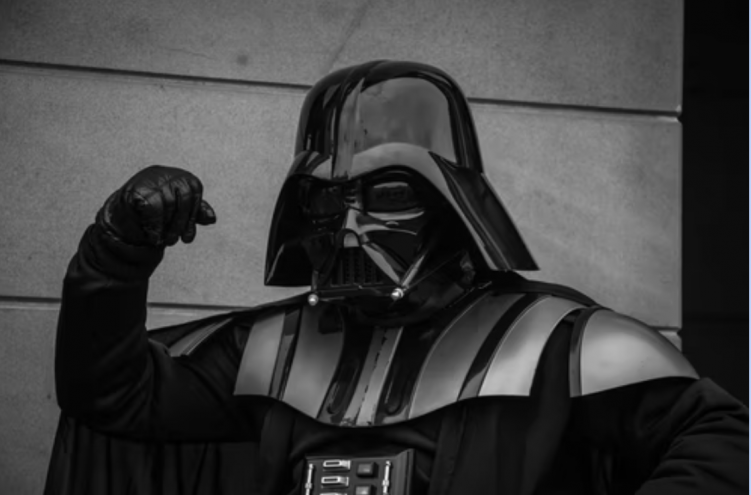The premiere of the Star Wars trilogy was a major cultural marker in a banner year littered with them. George Lucas and his company absolutely revolutionized how films are made and consumed by the general public. Some would say this came with quite a few caveats, but it still represents an important cinematic achievement. The cinematography alone has been studied and dissected for years by practitioners in the field as well as film historians. The following article is for every Star Wars superfan eager to learn more about the film and its many technological contributions to the industry.

Who Was the Cinematographer?
George Lucas’ significant contributions and legacy as one of the most important filmmakers of the 1970s sometimes supersede the reputation of others who have worked on the franchise. Especially the first outing in 1977 with the original Star Wars film. The man we have to thank for the film’s brilliant cinematography is Gilbert Taylor.
Taylor worked with some of the most important filmmakers in history, notably Stanley Kubrick, Roman Polanski, and Alfred Hitchock to name a few. He was the master working behind the camera on classics like Repulsion, A Hard Day’s Night, and Dr. Strangelove, among others. His transition to color film began with Hitchcock’s Frenzy, released in 1972, followed by The Omen, and then Star Wars. So much of the film’s style can be traced to innovations spearheaded by Taylor.
Key Aesthetics
As mentioned above Taylor helped to establish some of the franchise’s most well-known aesthetics and stylistic flourishes, some of which have been maintained in all future installments. When you think of your favorite Yoda Quote, rest assured that whenever the beloved figure appears, it is usually within the framework of an aesthetic established by Gilbert. In fact, in conjunction with Lucas and Spielberg, he helped to create the Dykstraflex, which is the first digital motion control photography ever used and has a big hand in contributing to the overall look and feel of the film. The camera was developed mostly to be used in Star Wars, and the digitally controlled system allowed for fluid motion in different directions – roll, pan, swing, boom, tracking, shutter control, and so on, all of which could be duplicated in several takes.
Shot Set-Ups
Up until that point in time, Star Wars earned a reputation as one of the most complicated and intricate films ever made. The studios were skeptical about the amount of money sunk into the production and with good reason. Some of the shots were done or redone twice or three times if they were simple, but for the more complex sequences, it could take three weeks or longer to finish up a single sequence. This was murder on the film’s budget, and it led to long, agonizing shooting schedules, with the cinematography team and Lucas working day and night to finalize things for just one shot.
Star Wars remains one of the most beloved films of all time, with a huge and devoted fanbase. The central story of a battle between good and evil, coupled with the still breathtaking cinematography made for an exquisite viewing experience that remains sacred to this day.


The premiere of the Star Wars trilogy was a major cultural marker in a banner year littered with them. George Lucas and his company absolutely revolutionized how films are made and consumed by the general public. Some would say this came with quite a few caveats, but it still represents an important cinematic achievement. The cinematography alone has been studied and dissected for years by practitioners in the field as well as film historians. The following article is for every Star Wars superfan eager to learn more about the film and its many technological contributions to the industry.
Who Was the Cinematographer?
George Lucas’ significant contributions and legacy as one of the most important filmmakers of the 1970s sometimes supersede the reputation of others who have worked on the franchise. Especially the first outing in 1977 with the original Star Wars film. The man we have to thank for the film’s brilliant cinematography is Gilbert Taylor.
Taylor worked with some of the most important filmmakers in history, notably Stanley Kubrick, Roman Polanski, and Alfred Hitchock to name a few. He was the master working behind the camera on classics like Repulsion, A Hard Day’s Night, and Dr. Strangelove, among others. His transition to color film began with Hitchcock’s Frenzy, released in 1972, followed by The Omen, and then Star Wars. So much of the film’s style can be traced to innovations spearheaded by Taylor.
Key Aesthetics
As mentioned above Taylor helped to establish some of the franchise’s most well-known aesthetics and stylistic flourishes, some of which have been maintained in all future installments. When you think of your favorite Yoda Quote, rest assured that whenever the beloved figure appears, it is usually within the framework of an aesthetic established by Gilbert. In fact, in conjunction with Lucas and Spielberg, he helped to create the Dykstraflex, which is the first digital motion control photography ever used and has a big hand in contributing to the overall look and feel of the film. The camera was developed mostly to be used in Star Wars, and the digitally controlled system allowed for fluid motion in different directions – roll, pan, swing, boom, tracking, shutter control, and so on, all of which could be duplicated in several takes.
Shot Set-Ups
Up until that point in time, Star Wars earned a reputation as one of the most complicated and intricate films ever made. The studios were skeptical about the amount of money sunk into the production and with good reason. Some of the shots were done or redone twice or three times if they were simple, but for the more complex sequences, it could take three weeks or longer to finish up a single sequence. This was murder on the film’s budget, and it led to long, agonizing shooting schedules, with the cinematography team and Lucas working day and night to finalize things for just one shot.
Star Wars remains one of the most beloved films of all time, with a huge and devoted fanbase. The central story of a battle between good and evil, coupled with the still breathtaking cinematography made for an exquisite viewing experience that remains sacred to this day.
Related Content: